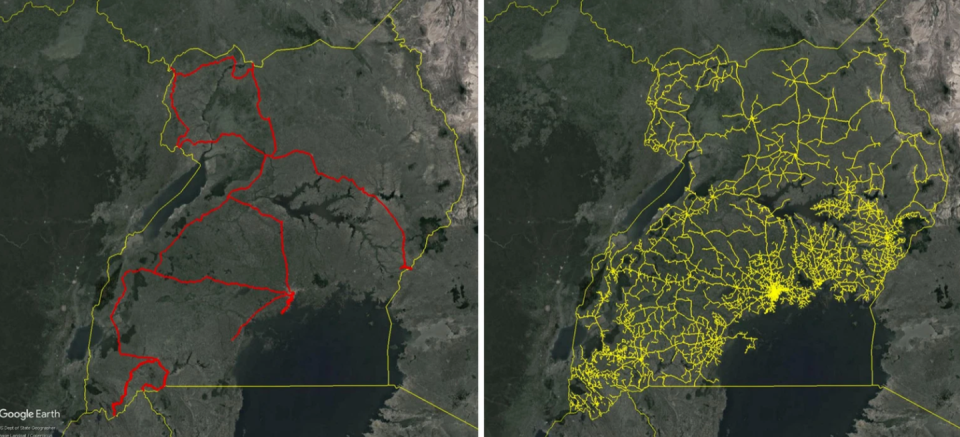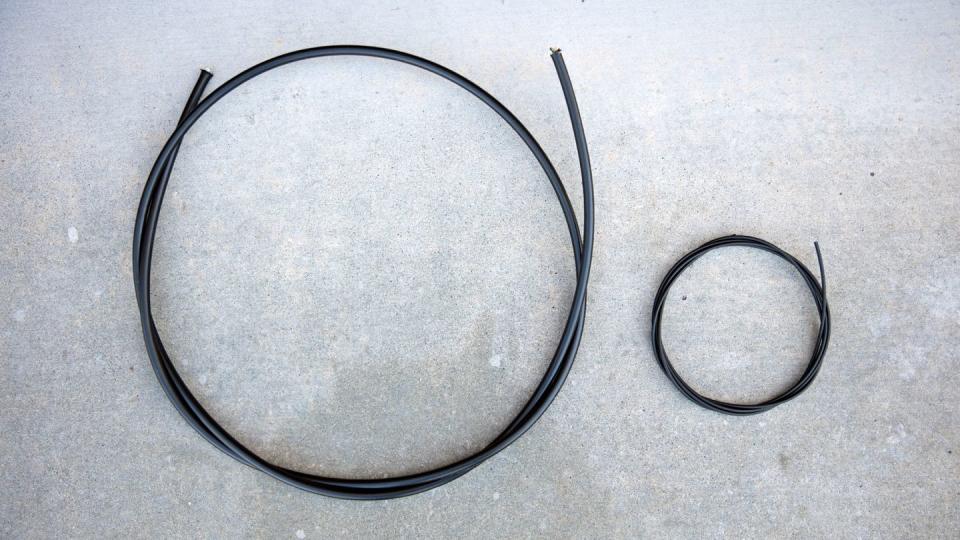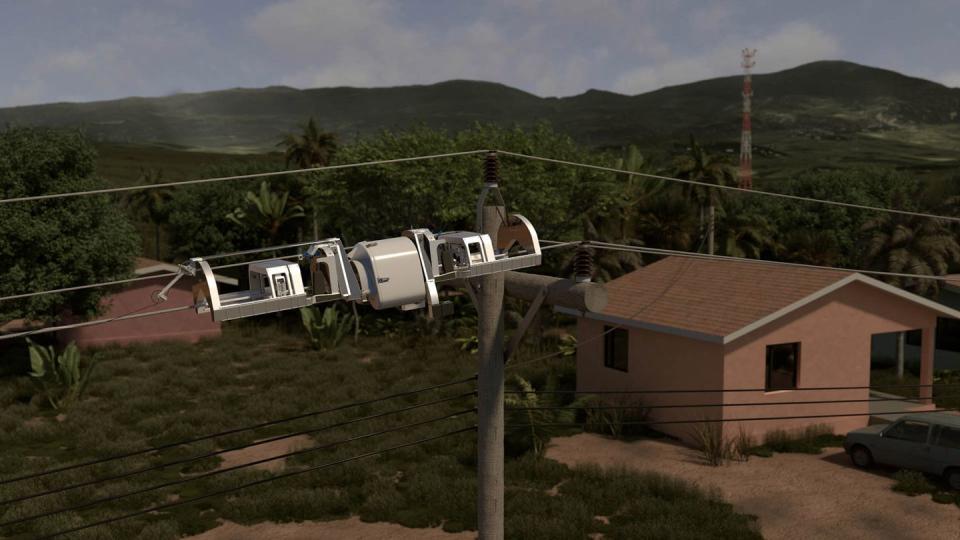Here Come Facebook's Fiber-Wrapping Robots

In a blog post, Facebook says it's come up with a robot capable of aerial fiber optic cable deployment.
It's part of a bid by Facebook Connectivity to bring high-speed internet to remote parts of the world.
Facebook won't install or control the fiber networks, but will instead license the robotic installation technology to internet service providers.
Fiber optic cable is one of the fastest ways to deliver the internet, because its bandwidth is thousands of times greater than, say, coaxial cables—those wires with a pin sticking out from the center that you may have screwed into your WiFi router at some point.
The cable itself only costs a few meager cents per meter, but the construction can be pricey, deterring installation in rural or developing regions. As a result, fiber optic networks are only available to about 30 percent of households across the U.S., according to a 2019 study, let alone the rest of the globe.
Facebook thinks it has the solution: a robot that crawls along existing power lines to install fiber optic cables without a full crew.
When Facebook engineers noticed the company's electrical infrastructure is, relatively speaking, ubiquitous in rural African countries, they decided to capitalize upon the existing infrastructure. Uganda, for instance, only has an electrification rate of about 43 percent, according to the World Bank, but the country's medium-voltage power grid (shown below in yellow) is still much more pervasive than its fiber network (shown in red).

In many cases, construction crews install fiber optic cables underground, digging out "microtrenches" for the network hardware. That's an expensive practice you don't really see with the electrical grid; outside of wealthy neighborhoods and packed cities, most power travels along aerial lines from a generation site, to substations, to communities.
"We realized that following the same grid with fiber could be an efficient way to build an end-to-end telecommunications network," Karthik Yogeeswaran, a wireless systems engineer for Facebook, said in a company blog post.
🕳 Let's go deeper. Explore the strangest corners of the world, solve life's most mind-bending mysteries, and get exclusive access to all things Popular Mechanics—starting now.
Helical Wrapping

Facebook plans to use a less-common fiber optic installation method, known as a helical wrap, or optical attached cable, to build internet access into pre-existing power lines.
Wayne Kachmar, a longtime cable designer, consulted with Facebook to come up with 200-micron-thick fibers with a high-strength, high-temperature, and track-resistant polymer coating. A typical fiber optic cable weighs about 250 pounds across a 1-kilometer span, but this cable only weighs 28 pounds across the same distance.
Electric utilities can attach 1-pound "repair splices" to existing power lines without creating more work (like surveying and analyzing the pole load, or moving attachments), so it doesn't cost anything extra to add the splices on, since they're so light. Facebook plans to take advantage of that concept for its fiber optic cables.
Since the 1980s, machines have been capable of wrapping fiber optic cable around existing power line conductors. Because these power lines are mostly devoid of hardware in between poles, usually to prevent fires, there's room for a machine to travel along the length of it.
Fiber-Wrapping Robots

Enter Facebook's fiber-wrapping robot.
For the fiber installation process to make sense, the machine has to install the cable while the power lines are energized. Power outages would be extremely inconvenient to nearby homes and business, not to mention counterintuitive to the process of better connecting those places.
So the wrapping robot must cross all of the obstacles on its route without any humans, who could be electrocuted if they intervene. The New York-based LC Robotics helped Facebook come up with the right design to accomplish that.
The final robot uses a pair of drive subsystems, including robotic grippers, to control forward motion; a lift subsystem that raises the robot's full payload up over obstacles; and a rotation subsystem that helps the full machine balance itself on the electrical cable. A vision system helps the robot identify obstacles and change course appropriately.
As for the outside components, like the shape of the robot and any coatings, Facebook is still working to come up with the best combination of materials to keep weight to a minimum and to ensure safe operation.
In around 90 minutes, each robot will be able to install about 1 kilometer's worth of fiber while getting around obstacles. The full crew will include two or three electric utility linemen, a pickup truck with a few kilometer spools of fiber, and one robot. The idea is to have a couple teams working in tandem along the electrical wires at a time.
Internet for All
Not only should this help bring faster internet to households that already have internet and want to upgrade, but the initiative will also fill in the connectivity gaps across the globe, Facebook says. According to a September 2019 report by the Broadband Commission for Sustainable Development, roughly 3.5 billion people—half the world's population—still don't have access to the internet at all.
Facebook won't actually install the fiber, but will instead license the technology to third-party internet service providers and infrastructure firms. Facebook is giving NetEquity Networks, a San Francisco-based infrastructure sharing company, the first non-exclusive, royalty-free license to deploy its fiber network installation system. Facebook won't own or operate any of the fiber optic cables.
"If successful, we believe this technology will allow fiber to effectively and sustainably be deployed within a few hundred meters of much of the world’s population," Karthik Yogeeswaran, a wireless systems engineer for Facebook, said in the blog post. "We expect to see technology trials of this fiber deployment system next year."
You Might Also Like

